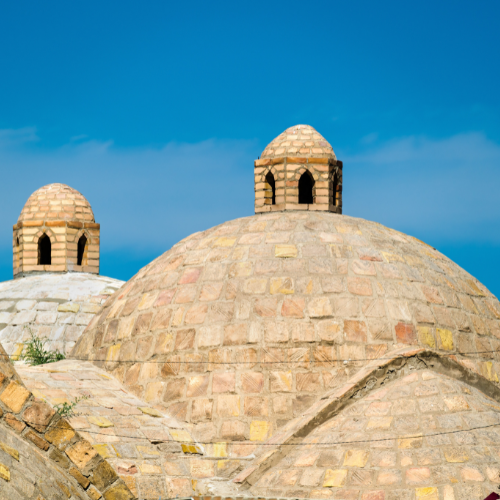Imagine stepping into a centuries-old structure, bathed in soft light filtering through intricate vents, where a gentle breeze keeps you cool without the hum of electricity. This refreshing experience wasn’t a futuristic dream, but the reality offered by ventilated domes, a time-tested architectural feature found across the Middle East, Africa, and India.
Harnessing the Power of Heat
These elegant domes, often seen gracing mosques and palaces, are more than just beautiful embellishments. They’re ingenious passive cooling systems that work on a simple principle: heat rises. By incorporating an opening at the top, a chimney effect is created, drawing hot air upwards and out of the building.
The Curve Advantage
But the architects of old went beyond just a basic opening. The iconic onion domes found in Islamic architecture take advantage of the curved surface. This shape increases air circulation, drawing even more heat from the building’s interior. Records dating back to 400 BCE showcase the effectiveness of these designs, many of which stand proudly to this day.
A Legacy of Innovation
These ancient domes were not just about comfort; they were also crucial for food preservation. Structures like the Yakhchāls in Iran utilized the combined power of evaporative cooling and the domed roof’s ventilation to store ice year-round, even in the sweltering desert. This ice proved invaluable for chilling food and making traditional Persian treats.
Modern Adaptations
The wisdom of these ancient designs is finding its way into modern architecture. Architects are embracing natural ventilation systems and vaulted roofs, recognizing their efficiency and aesthetic appeal. These features offer several advantages:
Reduced reliance on energy-intensive air conditioning: Saving money and resources.
Improved comfort: Providing a naturally cool and airy environment.
Sustainable solutions: Utilizing natural forces like wind and temperature gradients.
Culturally relevant designs: Preserving traditional knowledge and aesthetics.
Challenges and Opportunities
While promising, incorporating these ancient principles into modern settings isn’t without its challenges. Skepticism towards traditional methods, adjusting perceptions of comfort, and preserving existing structures require careful consideration.
However, the potential benefits are vast. From Cairo to California, architects are pioneering new ways to combine modern technology with ancient wisdom, creating sustainable and culturally-rich spaces. Remember, these domes are not just relics of the past; they offer a blueprint for a future where comfort and sustainability go hand-in-hand.
Stay tuned for the next article in our series, where we’ll delve into another fascinating ancient design principle for passive cooling!






